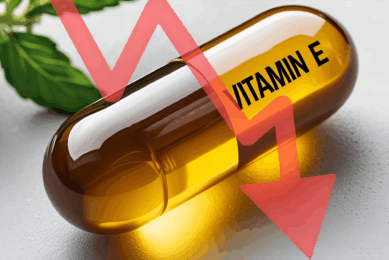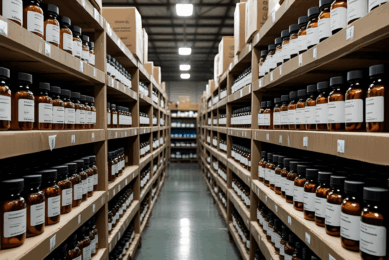Proper application of vitamins in a premix

An in-depth knowledge of premix components is necessary to ensure their industrial efficacy during feed manufacturing. It determines their quality, stability and value in the end product. Feed mix talked to Claude Annonier and Jean Marie Dollat from Adisseo about their experience regarding the proper use of vitamins in a premix.
Adding ingredients to a premix can be tricky. Can you explain why?
Claude Annonier (CA), Product Development Manager at Adisseo: Premixes are often made up of different ingredients which are generally not compatible (e.g. vitamins, minerals or acids). In addition, while most of the ingredients have a similar nomenclature they are, in reality, very dissimilar. In order to make a reliable and efficient premix, the physical and chemical specifications for each ingredient have to be known. At this stage, suppliers of ingredients play a significant role.
When formulating, are there specific precautions that need to be taken?
Jean Marie Dollat (JD), Chemistry and Formulation Manager at Adisseo: Trace elements are usually added to premix. They risk either oxidising or reducing the vitamin content (e.g. copper sulphate on vitamin A and magnesium oxide on vitamin E). This potential is realised with condensed water, which links particles together. The choice of components and the quality of the carrier within the premix helps to keep a lower water activity (Aw). This in turn reduces the likelihood of any chemical reactions. It is important to remember that moisture measurement is not a relevant indication. Only the measurement of water activity (Aw) is an indicator. Nevertheless many other precautions have to be taken upstream whilst buying vitamins.
What can premixers do in order to preserve the efficiency of vitamins?
CA: As soon as the vitamins arrive on the formulation site, they should come with complete documentation. This information should appear clearly on all packaging, since it will be used to track the product through the manufacturing process. We need to know the vitamin’s legal identification functions regarding the supplier’s name, batch number, production and expiry dates. And of course, this information should be easily readable. During storage, the use of barcodes helps to identify the vitamin and facilitates easier and more secure warehouse management. In warm/hot countries, vitamins require temperature-controlled storage to ensure they retain their biological efficiency.
Is the mixing stage a critical point?
CA: Mixing is indeed a critical point, in terms of product homogeneity and absence of crossed contamination. In order to reduce crossed contaminations, ingredients granulometry has been increased. The fine fractions, which lead to crossed contaminations in the mixer or handling machines, are thus reduced. In addition, the mixer has to aim towards conflicting objectives: to mix rough and fine ingredients, throw leftovers away to avoid crossed contamination, and all of this in a mixing time shorter than five minutes. Nowadays, mixing techniques enable obtaining satisfactory homogeneity even with extremely differing ingredients. Nevertheless it is necessary that premix remains homogeneous, even after its manufacture. For that, vitamins and carrier have to have the same characteristics in terms of granulometry (Figure 1).
Depending on the method of producing, a given vitamin can be made of particles whose size and shape are different. Also depending on the type of mixer used, particles’ heterogeneousness is more or less well treated. That is the reason why it is necessary to test the mixer. In that field, the Micro-TracerTM analysis method is a good reference. But in order to ensure a good mixing of the premix, it has to be traced with fine trace elements which are easy to measure out (cobalt or copper), and an element which has opposite physical characteristics, like vitamin A for example. In any case, the sample used for analysis should be different. In order to be representative of the mix, a sample has to contain 1,000 particles from the product to be analysed. To measure out copper sulphate (1 million particles per gram), the premix sample can be smaller than the one necessary to measure out vitamin A (150,000 particles per gram). This condition fulfilled, it is possible to compare the mixer efficiency and calculate the variation coefficient to be reached (CV lower than 5% in a premix).
Once the premix is packed, are there ultimate precautions that need to be taken in order to preserve all of its properties?
JD: Whether conditioned in bag or bulk, premix should remain stable (no demixing), have a good flowability and should not be dusty. If the active products and vitamins fulfil the criteria during the previous stages and if support has been well chosen, the final premix will have the necessary characteristics.
The most delicate technical phase during conditioning remains, in most cases, sampling, as it has to be representative of the manufactured product. In fact, during transfer, fine and premix powder can be aerated. During this aeration phase, some temporary micro-demixing can occur. And if sampling is processed at this moment, it won’t be representative of the whole premix. Fine or large particles will be over-represented depending on the sampling technique used. It is of utmost importance to take samples from a stabilised premix, totally air removed.
When opening the bags, what should be done to ensure the quality is not reduced?
CA: When vitamins stored at 10°C are transferred to the premix workshop, temperatures can frequently reach 40°C. Any moisture in the air will immediately condense on the vitamin, leading to the possibility of chemical reactions within the premix. To avoid this, it is advisable to allow the sealed bags to reach the ambient temperature before they are opened. The bags also need to be waterproof. When opening and handling the bags vitamins can produce clouds of fine dust which are negligible in quantity but huge in terms of number of micron-sized particles. It is difficult to evaluate this risk looking at classic product specifications, but proceeding to a laser granulometry helps comparing the proportion of micron size particles to a reference product.
How should one choose a silo for vitamin storage?
JD: Some vitamins are stored in silo to be then automatically used. In order to choose a silo compatible with the product flowing properties, flooding data should be known. Compressibility measurements indicated on technical sheets gives this indication (Figure 2). Regarding handling around extraction or dosage, JD says: Extraction has to be regular, in order to ensure a precise dosage of vitamins. The equipment differs depending of the type of vitamin to be measured out. For highly fluid products (compressibility 10%), the risk lies in flooding (in the case of vitamin A but also some calcium pantothenates), or hard bridging for more cohesive products (case for vitamines B1, or follic acid) (Figure 3). In that case, the silo has to be equipped with a dust tight gate. In the case of cohesive products (compressibility 40%), silo has to be equipped with agitator and extracting device with variable pitch screw.
What about checking the evolution of the premix quality as the time passes?
CA: Whilst treating samples, one should remember that the product’ activity is linked to a particulate system. Samples have to be divided with a technique which respects this mode. The rotary divider is the most reliable and performing method to do so. A well formulated premix should be stable during a period of time which has been evaluated and tested. But when time passes, redox reactions do occur anyway and speed up.
Source: Feed Mix magazine, Vol. 17 No. 1 (2009)











